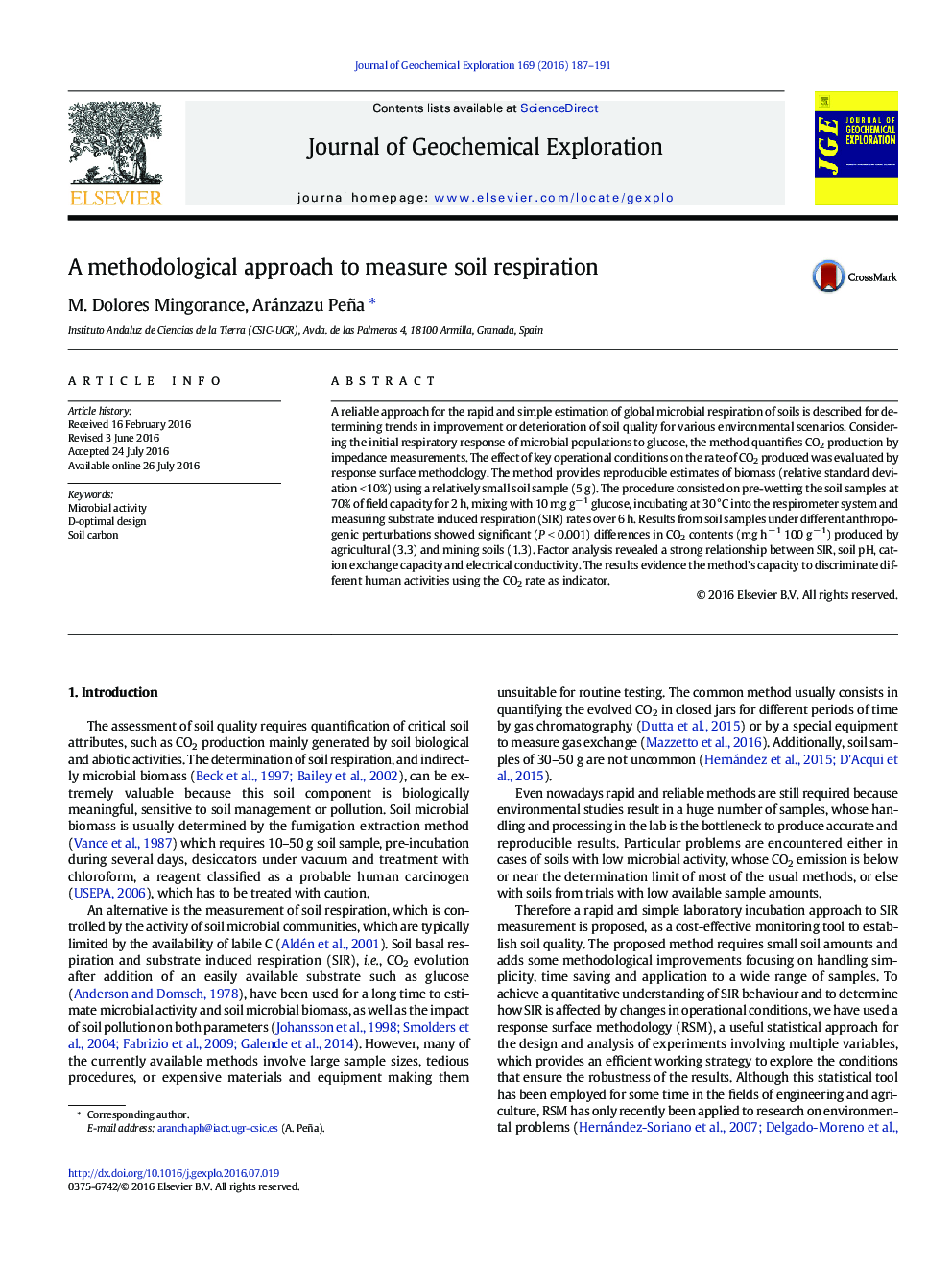| Article ID | Journal | Published Year | Pages | File Type |
|---|---|---|---|---|
| 4456912 | Journal of Geochemical Exploration | 2016 | 5 Pages |
•A rapid and reliable procedure to measure soil substrate induced respiration.•Handling simplicity, time saving and application to a wide range of substrates•Suitable assessment of the CO2-C evolution pattern along respiration time•Capability to discriminate between soil uses using CO2 rate as indicator
A reliable approach for the rapid and simple estimation of global microbial respiration of soils is described for determining trends in improvement or deterioration of soil quality for various environmental scenarios. Considering the initial respiratory response of microbial populations to glucose, the method quantifies CO2 production by impedance measurements. The effect of key operational conditions on the rate of CO2 produced was evaluated by response surface methodology. The method provides reproducible estimates of biomass (relative standard deviation < 10%) using a relatively small soil sample (5 g). The procedure consisted on pre-wetting the soil samples at 70% of field capacity for 2 h, mixing with 10 mg g− 1 glucose, incubating at 30 °C into the respirometer system and measuring substrate induced respiration (SIR) rates over 6 h. Results from soil samples under different anthropogenic perturbations showed significant (P < 0.001) differences in CO2 contents (mg h− 1 100 g− 1) produced by agricultural (3.3) and mining soils (1.3). Factor analysis revealed a strong relationship between SIR, soil pH, cation exchange capacity and electrical conductivity. The results evidence the method's capacity to discriminate different human activities using the CO2 rate as indicator.
